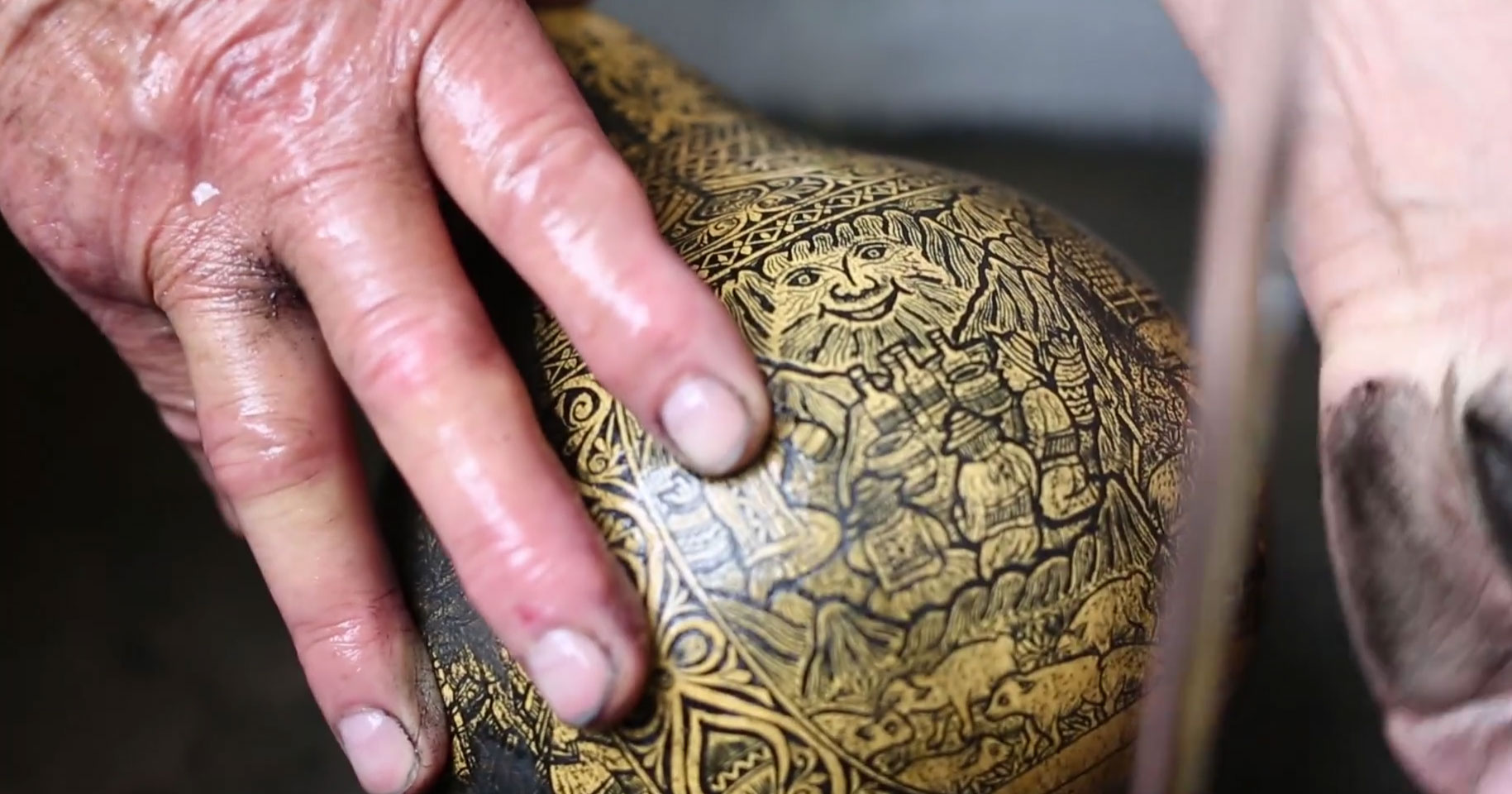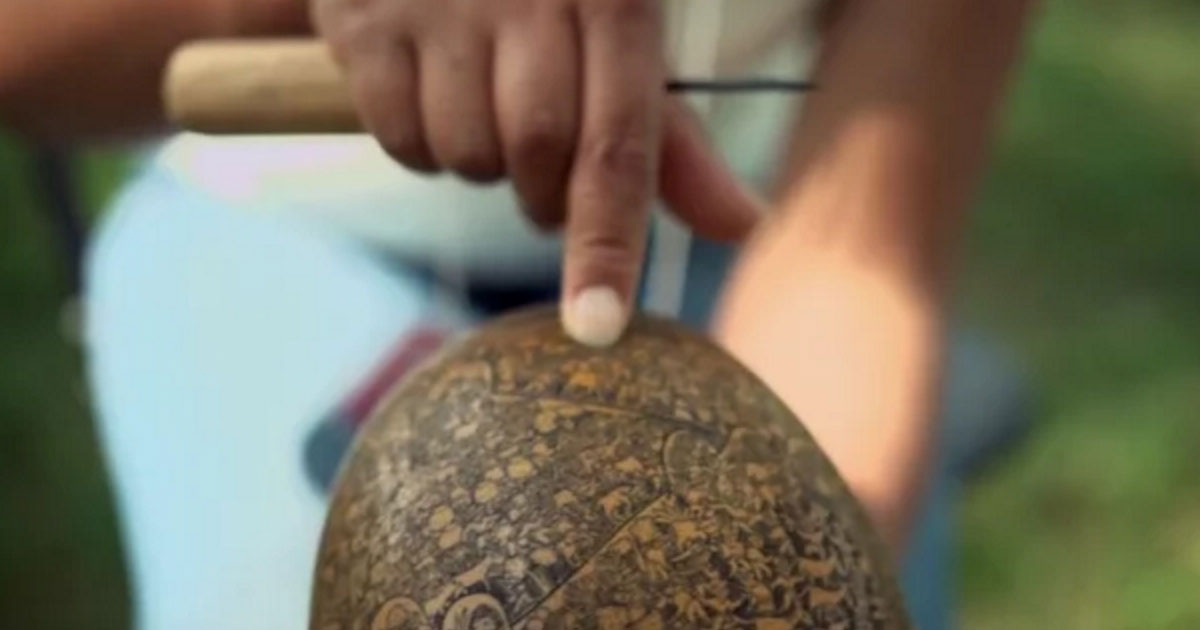
Since pre-Hispanic times, the basin of the Mantaro River, which runs from Jauja to Huancayo, has been rich in crafts and fiesta traditions. People from this valley, who are known as huancas, produce carved gourds, masks, jewelry, embroidery, ceramics, and textiles for the national and international markets. Many of these crafts have evolved from utilitarian to decorative since the introduction of highways and railroads from 1930 to 1950, which brought low-cost industrial products into the market.



Carved gourds, or mate burilado, capture the imagery of the creators’ daily lives and traditions. In the late 1700s, mule drivers brought utilitarian gourds to the Andean town of Cochas Grande, where carvers pioneered several distinctive techniques. There are now many families of carvers in Cochas. The Canto sisters see great value in continuing their father’s craft as a way of preserving the local customs and stories of their family.




